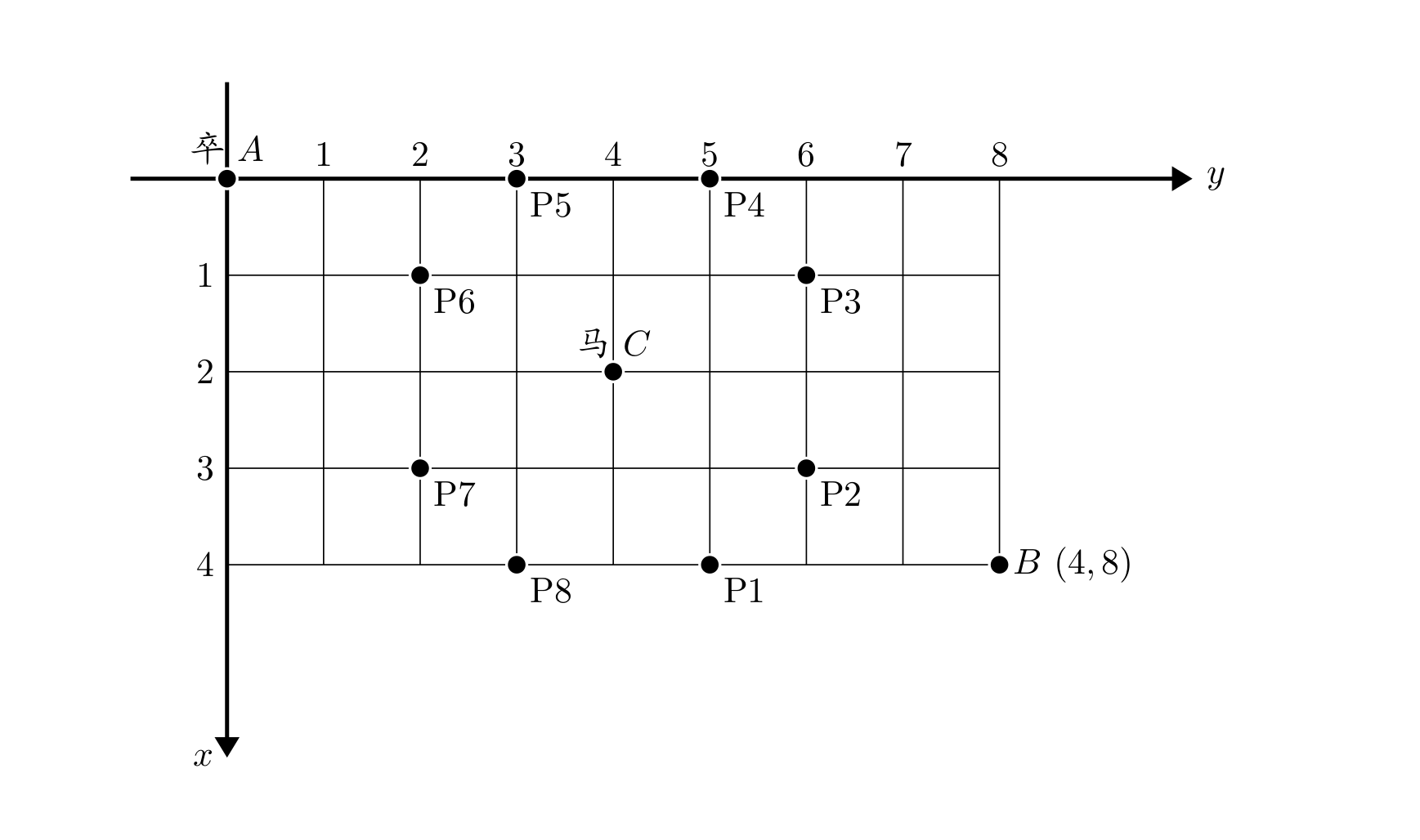过河卒
信息
此题目来自 洛谷, 原始题目与提交代码请前往 P1002 [NOIP 2002 普及组] 过河卒 - 洛谷。
题目描述
棋盘上 点有一个过河卒,需要走到目标 点。卒行走的规则:可以向下、或者向右。同时在棋盘上 点有一个对方的马,该马所在的点和所有跳跃一步可达的点称为对方马的控制点。因此称之为“马拦过河卒”。
棋盘用坐标表示, 点 、 点 ,同样马的位置坐标是需要给出的。

现在要求你计算出卒从 点能够到达 点的路径的条数,假设马的位置是固定不动的,并不是卒走一步马走一步。
输入格式
一行四个正整数,分别表示 点坐标和马的坐标。
输出格式
一个整数,表示所有的路径条数。
输入输出样例
输入 #1
6 6 3 3
输出 #1
6
说明/提示
对于 的数据,,,。
【题目来源】
NOIP 2002 普及组第四题
题目解答
显而易见,像这类求路径数量的题目都涉及到了 动态规划。 那么我们可以从题目得到 ,设 。
由于卒到达下一个点要么是从左边移动了 1 步过来的, 要么是从上面移动了 1 步过来的, 可以得到一个状态转移方程 。
再对碰到马的控制点的 dp 跳过即可。
- C++
/**
* 洛谷 P1002 解答程序。
* @author CoolCLK
*/
#include <iostream>
#include <vector>
typedef long long l_long;
using namespace std;
void acceptInput() {}
/**
* 接受多个参数的输入。
* @author CoolCLK
*/
template <typename T, typename... Args>
void acceptInput(T& first, Args&... args) {
std::cin >> first;
acceptInput(args...);
}
int main() {
int m, n, p, q; // B(n,m),马(p,q)
const int addP[] = {0, -2, -1, 1, 2, 2, 1, -1, -2};
const int addQ[] = {0, 1, 2, 2, 1, -1, -2, -2, -1}; // 马控制点的相对坐标
acceptInput(n, m, p, q);
vector<vector<l_long>> dp(n + 1, vector<l_long>(m + 1, 0));
vector<vector<bool>> controlled(n + 1, vector<bool>(m + 1, false));
for (int i = 0; i < 9; ++i) {
int ap = p + addP[i];
int aq = q + addQ[i];
if (ap >= 0 && ap <= n && aq >= 0 && aq <= m) {
controlled[ap][aq] = true;
}
}
dp[0][0] = 1;
for (int i = 0; i <= n; ++i) {
for (int j = 0; j <= m; ++j) {
if (controlled[i][j]) continue;
// 非原点(0, 0)
if (i > 0) dp[i][j] += dp[i - 1][j];
if (j > 0) dp[i][j] += dp[i][j - 1];
}
}
cout << dp[n][m] << endl;
return 0;
}